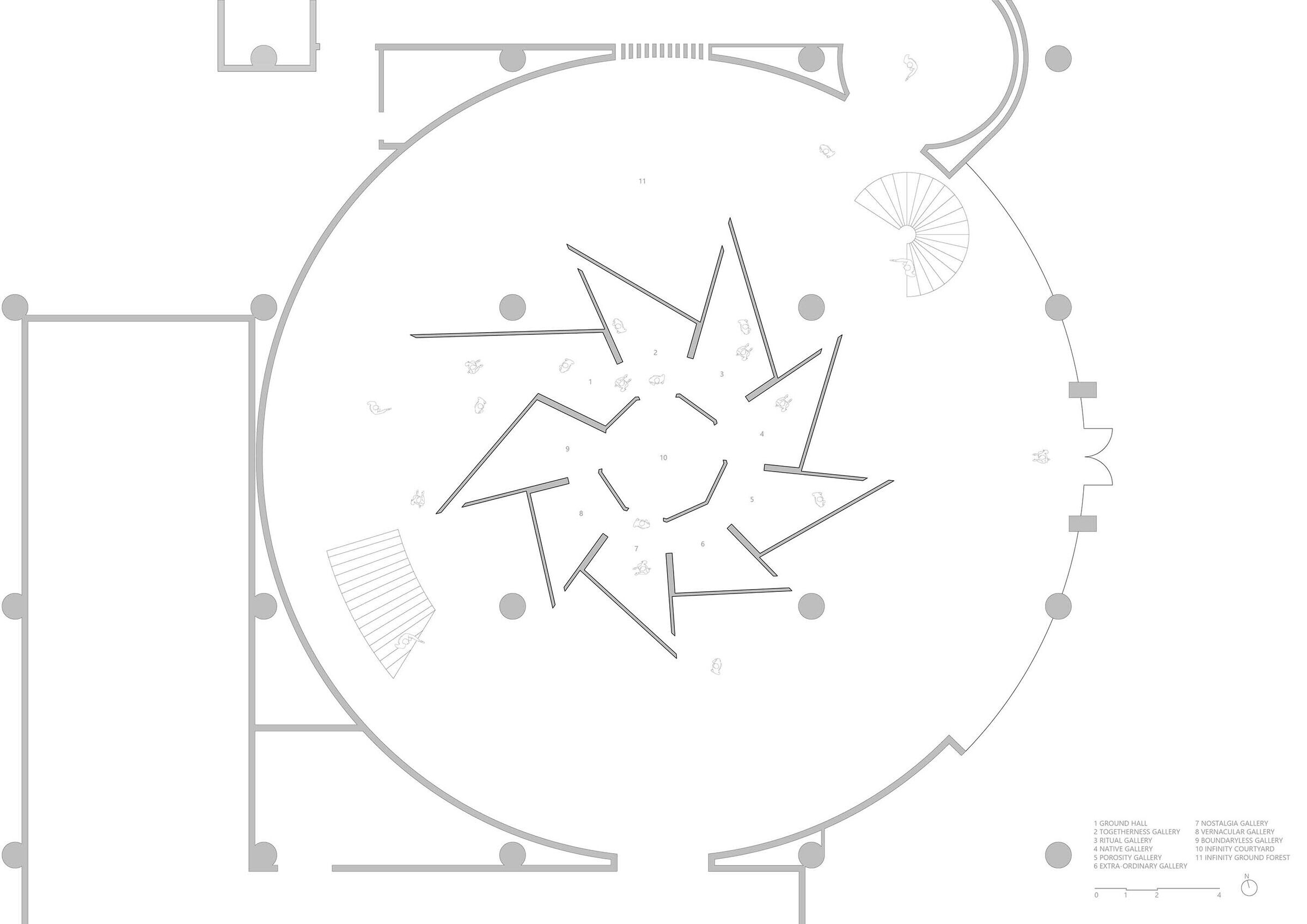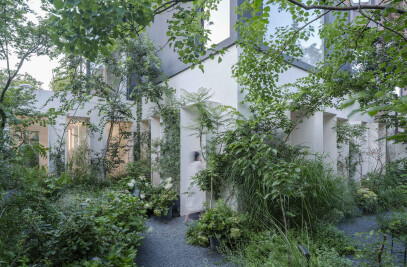The Infinity Ground Architecture Museum is located in the Bangkok Art and Culture Center (BACC) in central Bangkok, surrounded by Siam Discovery, Apple Central World, Central Embassy, Rosewood Bangkok, and other large commercial buildings. However, while these massive concrete buildings bring convenience and prosperity to Bangkokians, they also make the development of buildings run counter to the natural environment. Hung And Songkittipakdee (HAS) propose a brand-new idea: through the undulating earth covering buildings and nature, Bangkokians living in the downtown can re-perceive the infinite nature.
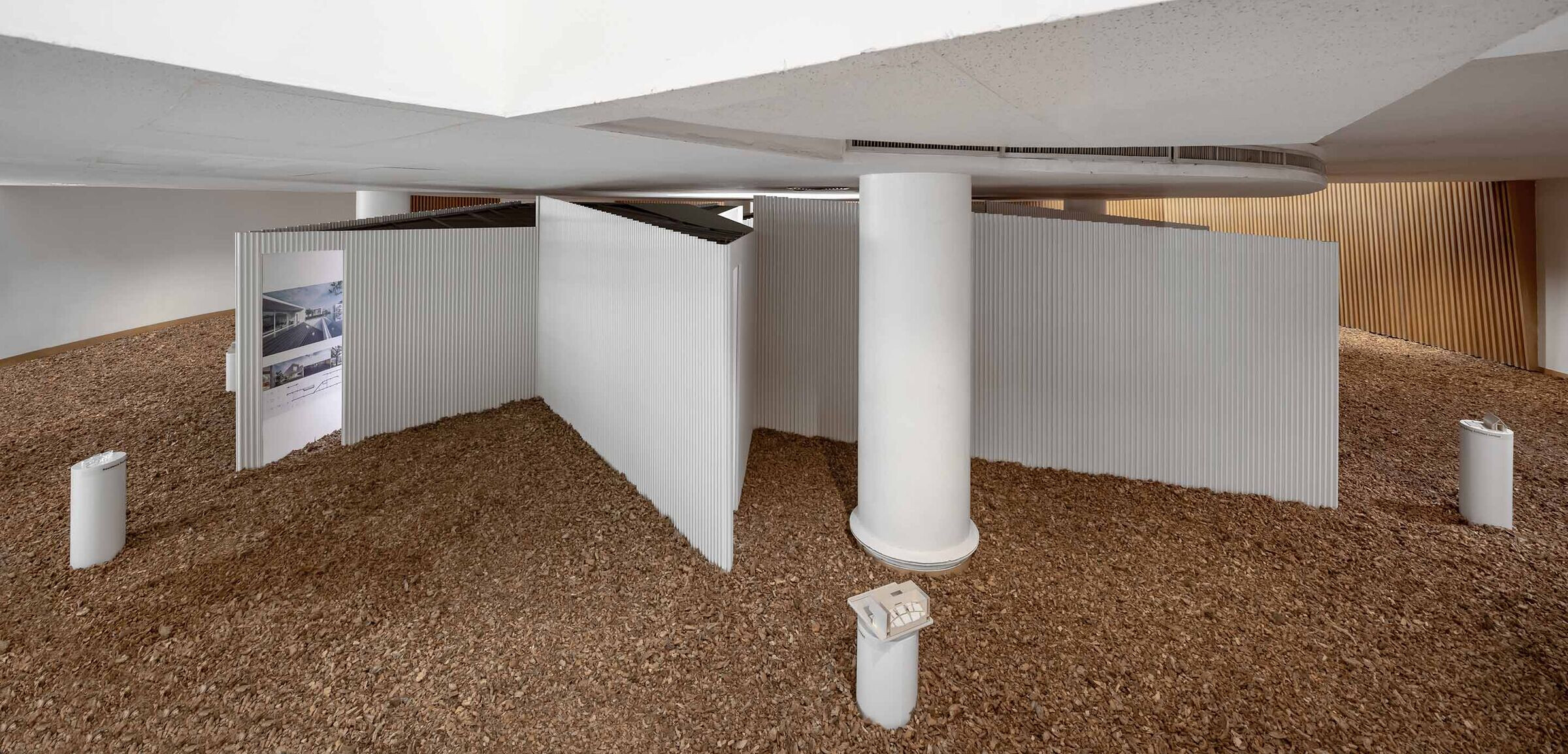

HAS Design and Research regards the opening of the atrium of the Bangkok Art and Culture Center as the highlight of the space. The opening is not only a "natural hole" connecting the external environment but also provides visitors with interactions on different floors. During the day, the opening's natural light from the sky is scattered on the ground, and its shadow is like a floating earth effect; at night, the sky is like a black hole, and its starry sky releases a mirror-like water ripple.
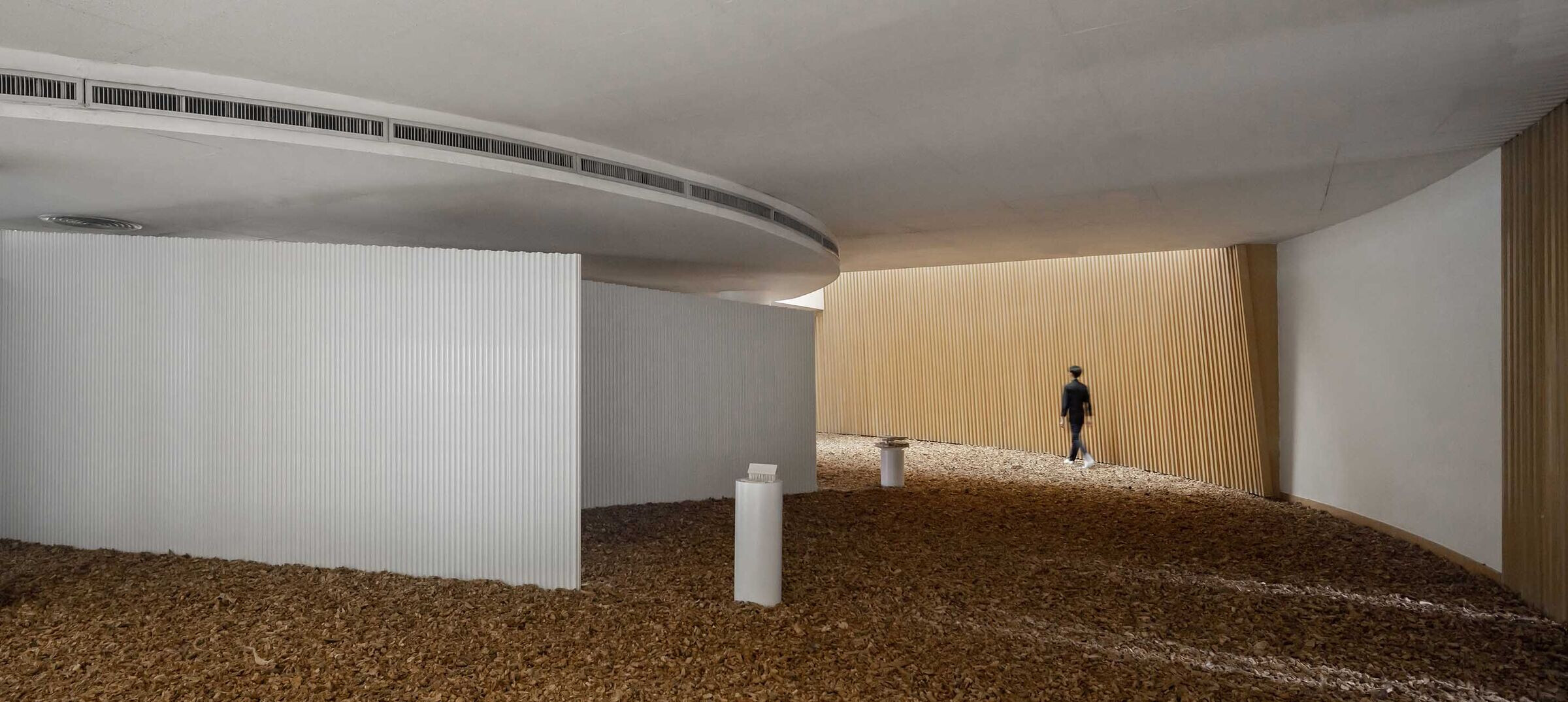

The design uses nine slanted roofs to surround the atrium in a manner of settlement. At the Ground Hall, the wall's letters create a floating effect like light and shadow shining on the earth. These letters also constitute a world map, symbolizing the drift and aggregation of the earth, which relates to Infinity Ground - Thailand and Taiwan Contemporary Architecture Exhibition. In the exhibition space, eight quadrilateral galleries of different dimensions present eight themes, including Togetherness, Ritual, Native, Porosity, Extra-Ordinary, Nostalgia, Vernacular, and Boundaryless. Each gallery faces a vertical opening, which frames and extends the gallery view to the architectural model.
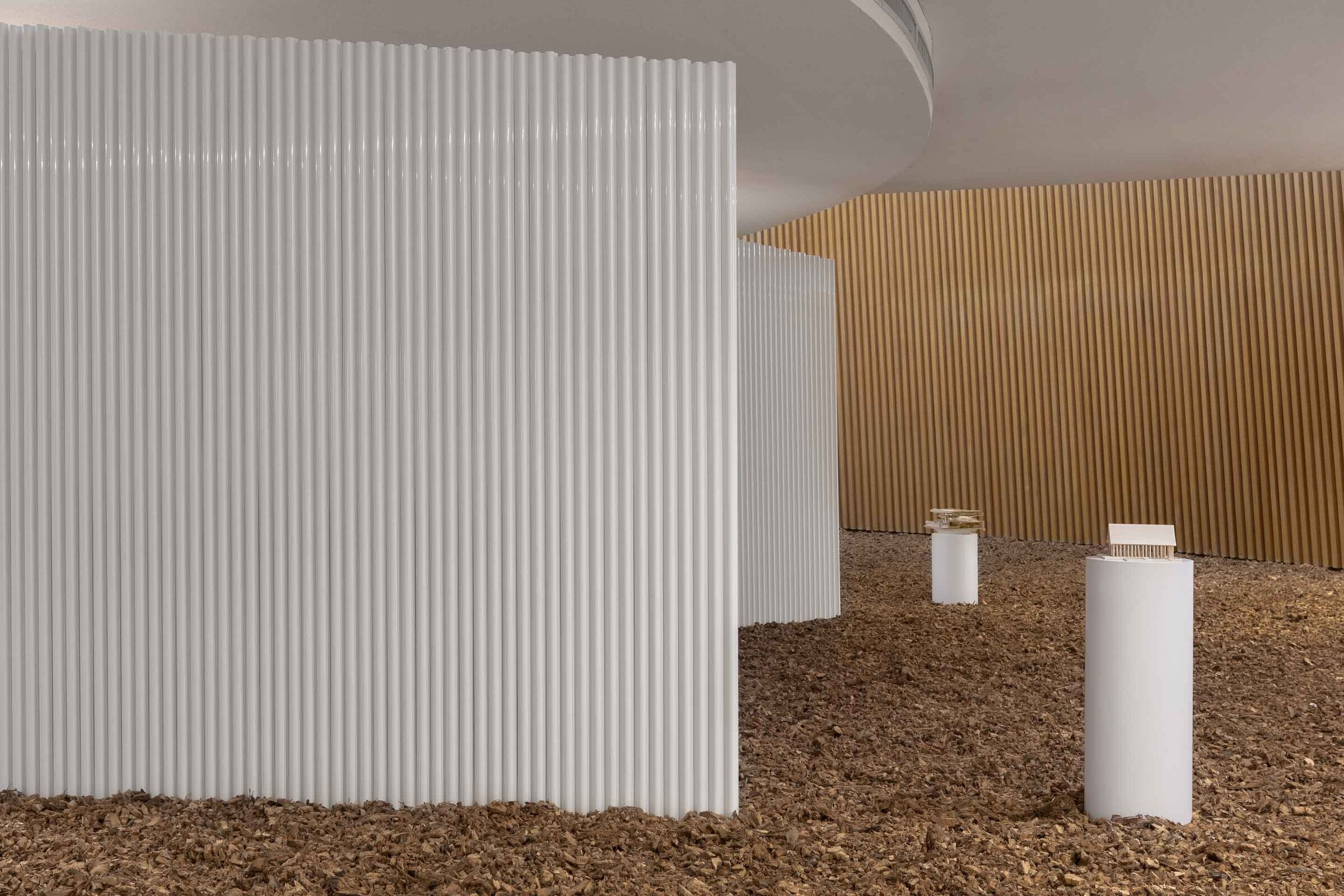
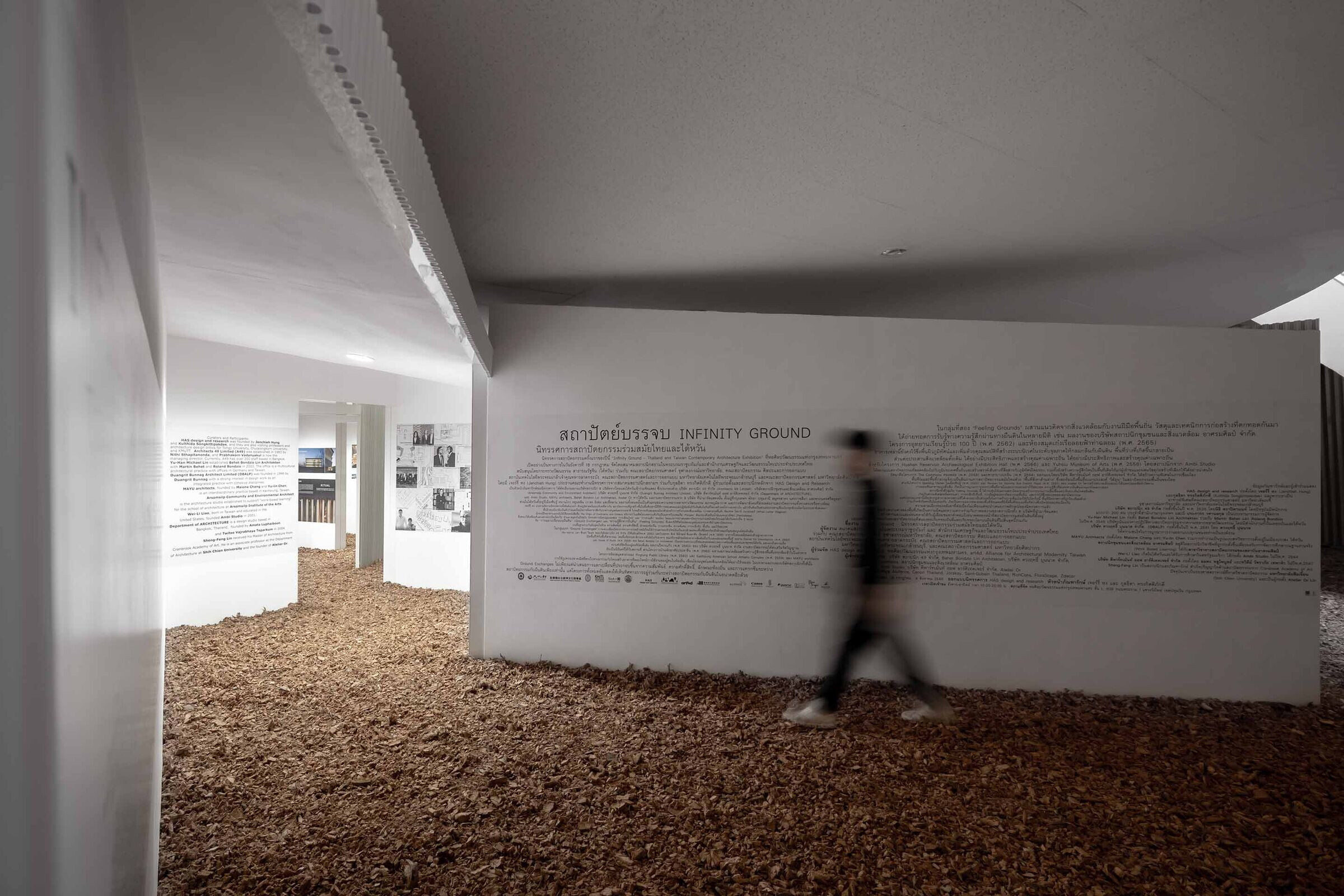
The patterns in each gallery also emphasize the architectural works. For example, the Togetherness Gallery uses pixelated patterns to display the human lifestyle in a tropical context; the Ritual Gallery uses strip patterns to emphasize the axis of religious buildings; and the Vernacular Gallery uses stacking patterns to display materials and tectonics. The circulation of the eight galleries eventually guides visitors to the Infinity Courtyard, which reflects the sky, the ground, and the building itself, presenting the Infinity Ground Architecture Exhibition's story and space emotion.


The Infinity Ground Architecture Museum mainly uses recyclable materials.The building facade is made of reusable aluminum pipes, a new material developed by HAS Design and Research and Alufence. Those aluminum pipes are assembled in a snap-on way without screws, so they can be reused without creating construction waste. The paving material is coconut shells, which are from local farms in Bangkok. This material is commonly used for soil fertilizer and heat insulation; however, in the Infinity Ground Architecture Museum, this material covers the entire space and not only provides a visual impression of the vast earth, but also allows visitors to feel the ups and downs, softness, and senses of the soil during walking. Coconut shells will eventually return to the local farm again. It also alludes to the infinite theme of the ground, not only in the urban area of Bangkok but also in farms all over Thailand, spreading the architect's attention to the earth.
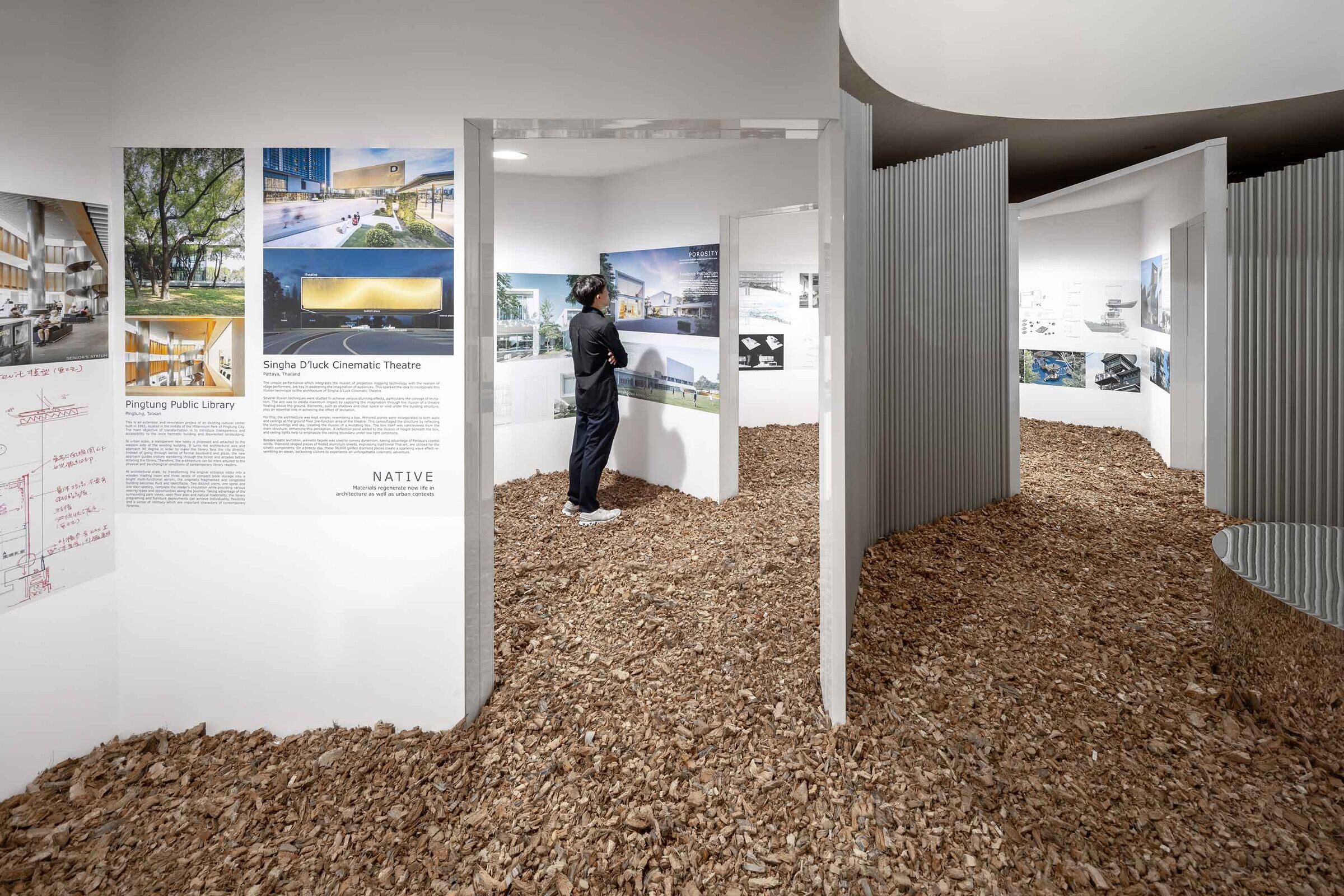
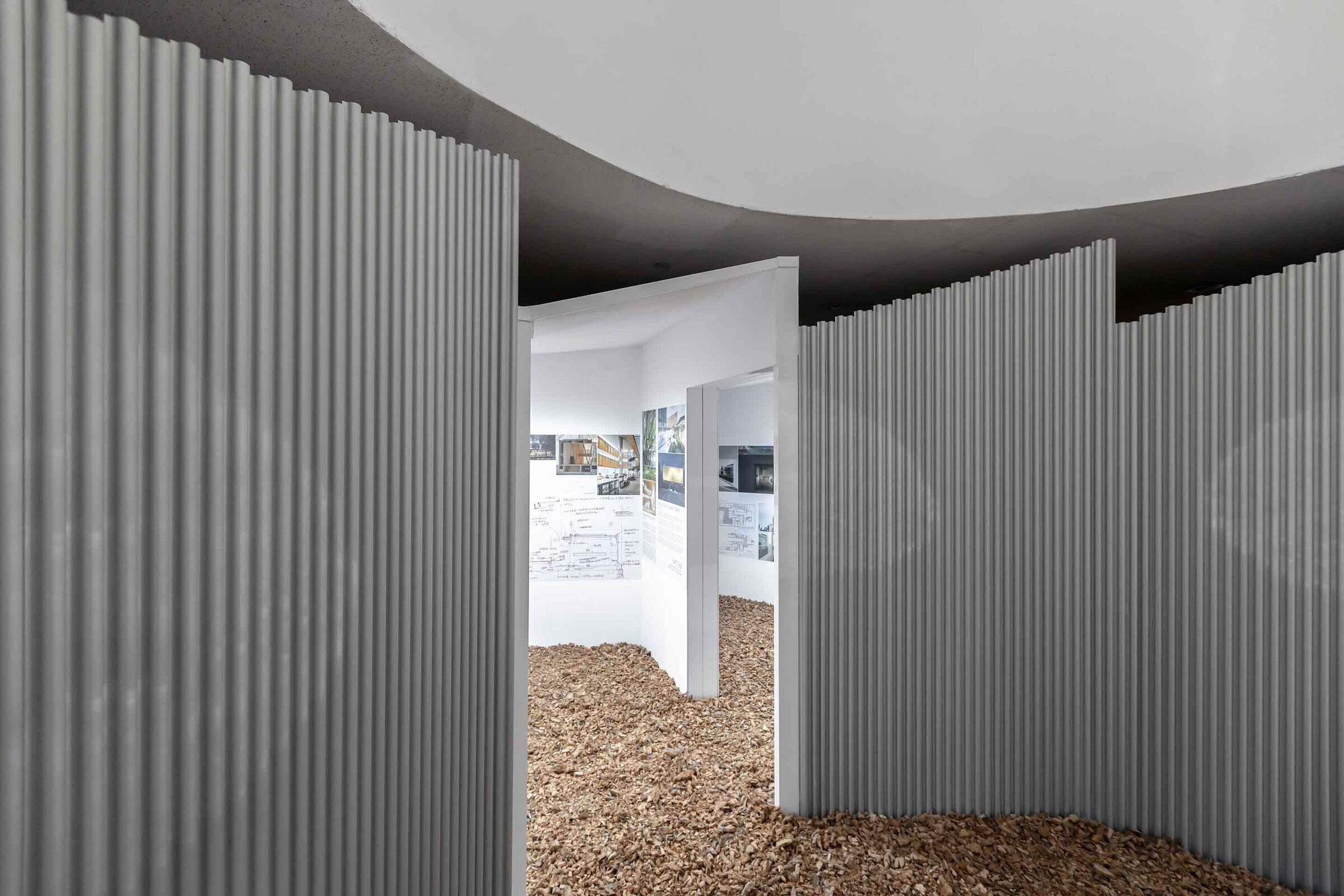
Team:
Architecture firm: HAS design and research
Design team: Jenchieh Hung, Kulthida Songkittipakdee, Nicha Teanpraneet, BoonyaratToruen
Lighting design: Jenna Tsailin Liu
Lighting technology: Visual Feast (VF)
Constructor: Alufence
Photo credit: Ketsiree Wongwan


Material Used:
1. Alufence
2. Saint-Gobain Thailand
3. Jorakay
4. Canon Thailand
5. RichCons
6. FloraScape
7. Zdecor
